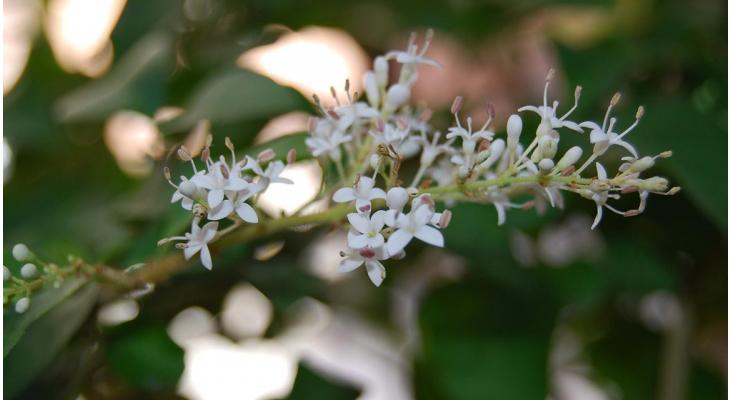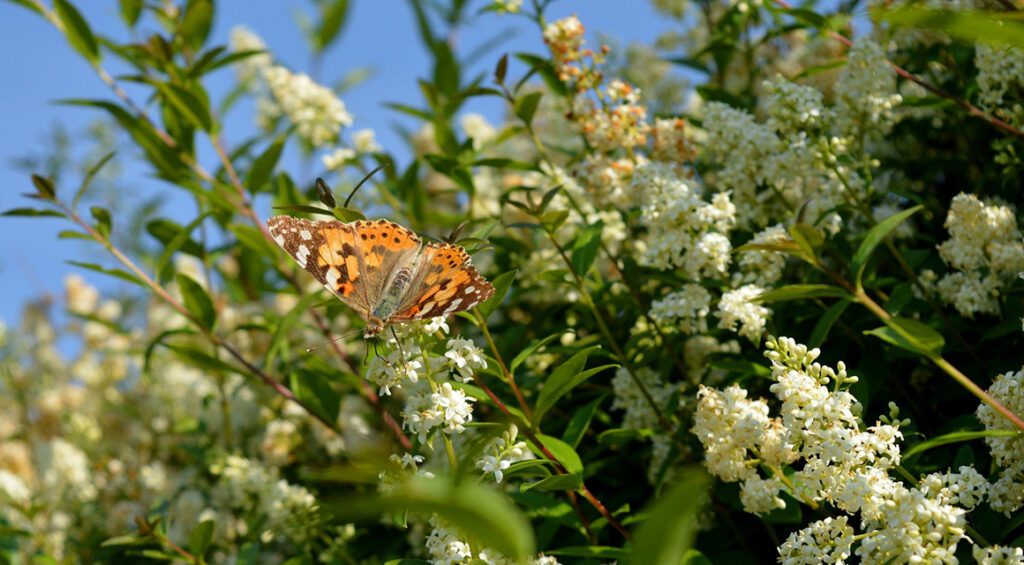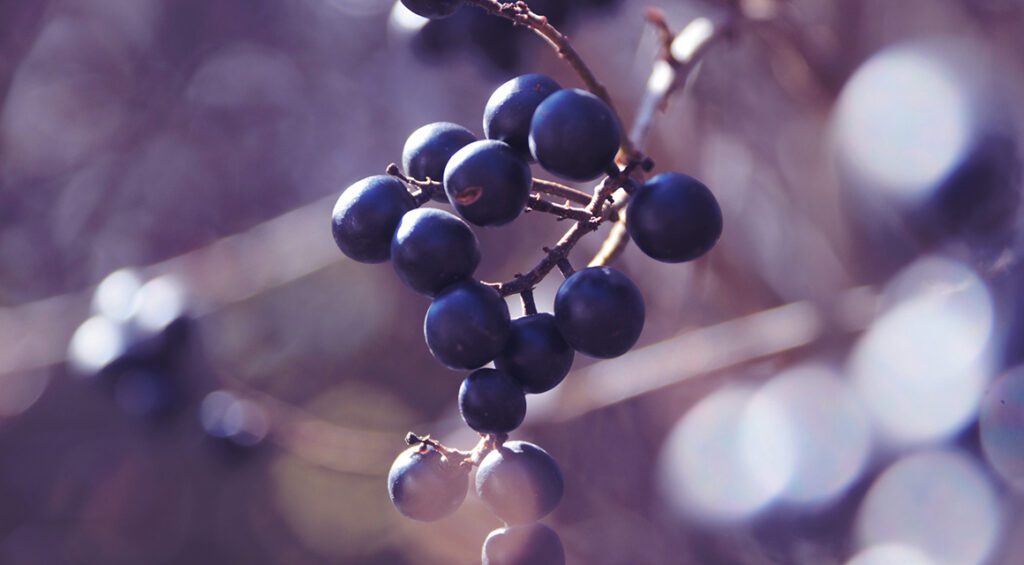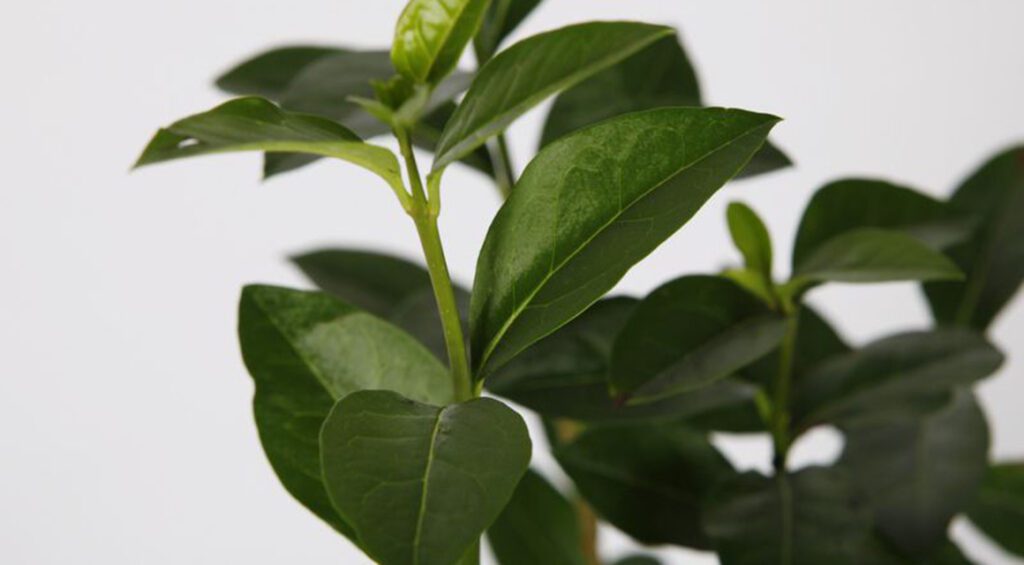
Privet is often used as a formal hedge plant, but it’s actually a particularly versatile hedge plant that’s also great for creating informal hedges that have more of a playful feel. In this blog, therefore, we take a closer look at the various options for a flowering privet hedge.

Contents
How and when blooms privet?
First of all, it is good to know what the flowers of privet look like and exactly when the flowering period takes place. Privet is not a profusely flowering hedge plant. It has relatively inconspicuous, white flower panicles. Although the flowers don’t look particularly colorful, they can still give off a lovely fragrance, which then attracts many insects to your garden. A flowering privet hedge is therefore also always a particularly lively hedge.
The flowering time of privet is approximately between May and July. So by the time you read this blog, the privet’s flowers will have just reached their peak. Because privet blooms relatively early compared to other flowering plants (hydrangea, for example, doesn’t bloom until between June and September), the blooming season of your privet hedge may get in the way of any pruning you may have planned for your hedge.

Pruning back a flowering privet hedge
Because privet is not generally known as a flowering plant, this can be justified by the fact that it is mostly used as a formal hedge in the garden, which is cut back heavily. Therefore, a formal hedge is cut back heavily at the beginning of the year, between March and June, so that it can keep its shape for a long time. The flowers of the privet are therefore in the part of the hedge that has already been cut back before the flowering period.
However, if you prefer privet hedges that bloom, then you should not cut your hedge back until after it has bloomed. Although it is quite late for hedge plants to be cut back as late as July, even then the hedge will still have enough time to recover from this pruning before the onset of winter. This will allow you to benefit from the fragrance and unique ornamental value of the flowers for a long time to come.

Birds and privet berries
If you do not cut back privet in July, because it should continue to grow in your garden even then uncut, then numerous berries will develop from the flowers. Although privet is related to the olive tree, the berries of privet should still not be eaten by us humans because they are poisonous. However, these berries are extremely popular with birds. The privet flowers attract many insects to the garden and the privet berries attract many birds to the garden, therefore thanks to your privet hedge your garden will always remain decorative and lively.
Anyway, privet as a hedge is popular with birds, because the structure of evergreen hedges is quite compact and strongly branched. This is also true, for example, the thuja, yew or cherry laurel. This makes privet hedges safe and well-protected places for birds to build their nests. Informal privet hedges, which are not cut back too much, therefore provide birds with plenty of shelter and food. Therefore, the privet should not be missing in the garden of a bird lover.

Cut the privet in the winter
If you do not cut the privet hedge throughout the year, then you will get a lot of pleasure from the flowers and berries. Although this is a tempting thought for many garden owners, we still have to face the fact that privet can grow quite tall. As a result, the common privet can grow nearly 2 feet or taller if uncut. Due to its fast growth, this will not last long either. Therefore, pruning is still necessary sooner or later.
You can therefore radically cut back the privet in winter, which, by the way, also applies to other flowering hedge plants. Although privet is an almost evergreen hedge plant, and thus it almost never loses its leaves, even in winter, it is still in a dormant phase in winter. Therefore, make sure that you do not cut back the privet in frosty temperatures. Winter pruning, in fact, makes it difficult for the privet to recover and continue to grow.

An informal privet hedge
As already said: the privet is often used in the garden as a formal hedge plant. This is also quite possible because this is a plant that has a compact, highly branched growth habit and relatively small leaves. This allows privet to hold its pruning shape well without creating holes in the hedge. Nevertheless, informal privet hedges are also an interesting option. If you allow the privet a little more freedom as it grows, this can create a pretty effect in the garden.
An informal hedge usually goes very well with rural gardens. There, for example, they are often used as a property boundary. However, privet hedges can also delineate different areas of the garden quite wonderfully in large-scale gardens. However, the only disadvantage of a particularly informal, playful privet hedge is that it can grow to be more than a meter wide, which means that it takes up a relatively large amount of space in the garden.

Which privet variety can be used well as a flowering hedge?
The golden privet is known for having bicolored leaves, which is why this privet variety got this name. Its leaves have yellow and green colors, its flowers have a white color and its berries have a black color, which makes it safe to say that this is a colorful plant. Wintergreen privet ‘Atrovirens’ is a cultivated form that, compared to other privet varieties, loses much less leaves in winter, which also gives this variety a high ornamental value.
So, in general, privet is a particularly hardy hedge plant that can grow well almost anywhere. This hedge plant can even cope well with air pollution, so it can grow well in industrial areas. But privet can also cope well with locations along the coast.

